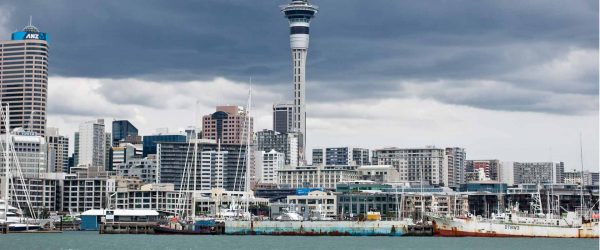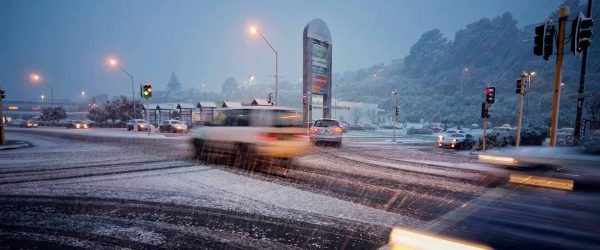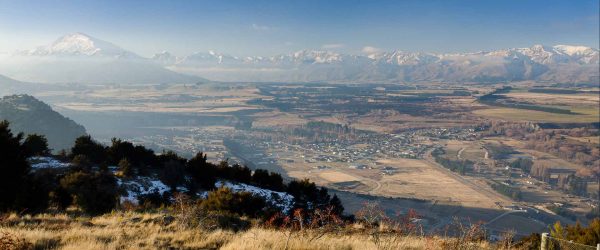Weather & Wildfire
Te Huarere me te Ahi Pūkākā
Vision
To make Aotearoa New Zealand more resilient to high impact weather and wildfire.
Programme description
Aotearoa New Zealand is vulnerable to high impact weather events. Such events have caused over $4 billion in damage during the past 20 years. The cost is not only financial; people have lost their lives, homes, businesses, and Māori cultural heritage sites have been damaged or destroyed. Climate change is steadily increasing the severity and frequency of these extreme weather events.
We aim to use recent advances in computer modelling to give land-use planners, emergency response managers and affected communities the information they need to plan for and mitigate high impact weather events.
To do this, we are working with stakeholders and partners in central and local government, utilities providers, and hapū and iwi to:
- develop detailed datasets of the impact of past extreme weather events
- use the latest generation of computer modelling to quantify the impacts of three extreme weather scenarios (an ex-tropical cyclone hitting northern Aotearoa New Zealand, a severe winter storm in the south, and a wildfire at a Central Otago subdivision)
- research in detail how best to protect our electricity grid, transport network and other key infrastructure from high impact weather
- develop an online decision-support tool with Māori communities to enable mitigation measures for high impact weather
- research how best to communicate about high impact weather events to support effective decisions.
Our research will make Aotearoa New Zealand more resilient to the rising risk of extreme weather and wildfire by helping our stakeholders and partners protect lives, infrastructure, property, and cultural heritage.
Wawata
Kia manawaroa ake a Aotearoa i te huarere taikaha me te ahi pūkākā.
Whakaahuatanga papatono
He whakaraerae a Aotearoa ki te huarere taikaha. Nui ake i te $4 piriona te nui o te whakamōtī i ngā tau 20 ki muri. Ehara i te mea he moni noa iho te utu; engari kua ngaro atu te tangata, ngā kāinga, ngā pakihi, ā, kua whakamōtī ngā wāhi tuku iho a te Māori. Nā te āhuarangi hurihuri i piki haere te kaha me te putanga o te huarere taikaha.
Kei te whai mātou ki te whakamahi i ngā kōkiritanga whakatauira ā-rorohiko hei tuku mōhiohio ki ngā kaiwhakamahere whakamahinga-whenua, ngā kaiwhakahaere urupare ohotata me ngā hapori whaipānga kia pai ai tā rātou whakamahere, me te whakamauru i ngā pāpātanga nui o te huarere.
Hei whakatutuki i tēnei, kei te mahi tahi mātou ki te hunga whaipānga me ngā hoa mahi o te kāwanatanga ā-motu, ā-rohe hoki, ngā ratonga tūāpapa, ngā hapū me ngā iwi ki te:
- whakawhanake taipitopito huinga raraunga mō te pāpātanga o te huarere taikaha i mua
- whakamahi i ngā whakatauira ā-rorohiko taumata hou hei ine i te nui o ngā papātanga o ētahi tūāhua huarere taikaha e toru (he haumātakataka muri-pārūrū ka tau ki te raki o Aotearoa, he āwhā takurua taikaha i te tonga, me tētahi ahi pūkākā i tētahi wāwāhanga i te takiwā i waengapū o Ōtākou)
- āta rangahau me pēhea e whakahaumaru i tō tātou whatunga hiko, te whatunga waka kawe me ētahi atu tūāhanga matua i ngā huarere taikaha
- whakawhanake i tētahi rauemi tautoko-whakataunga tuihono kia āhei ai ngā hapori Māori ki te whakamauru i te pāpātanga o te huarere taikaha
- whakawhanake i ētahi atu rautaki whakawhitiwhiti kōrero pai mō te huarere taikaha me te ahi pūkākā.
Mā ā mātou rangahau e manawaroa ake ai a Aoteroa ki te pikinga o te tūraru o te huarere taikaha me te ahi pūkākā mā te āwhina i te hunga whaipānga me ngā hoa mahi ki te whakahaumaru i te tangata, te tūāhanga, ngā rawa me ngā taonga tuku iho ā-ahurea.
Questions we’re answering
Better Protection of Māori Cultural Footprints
Kia pai ake te tiaki i te taiao ahurea Māori i te huarere taikaha
Improving the Communication of Weather and Wildfire Information
Te whakapai ake i te tuku mōhiohio mō te huarere me te ahi pūkākā
Research Team
Co-Funding Partners
- Auckland Council
- The University of Auckland
- WSP
- lwi and hapū in Tāmaki Makaurau Auckland
- Heritage NZ
- NIWA
- Deep South Challenge
- Fire and Emergency New Zealand
- GNS Science
Weather & Wildfire
Latest Resource Outputs
Challenge Lifetime Summary
A summary of Resilience Challenge achievements and impacts over ten years of collaborative research
RNC2 Weather and Wildfire Landslide Project: analysis of recent rainfall-induced landslide datasets for vulnerability functions
Investigating building damage due to rainfall-induced landslides triggered by significant storm events.
Impact-based forecasts and warnings
Impact-based forecasts and warnings (IBFWs) offer a way to design and communicate warnings that are more meaningful and relevant to people.
Risk perception and preparedness in a high-wildfire risk community: case study of Northern Wānaka/Albert Town, Otago
What actions that will lead to improved preparedness for living with an increasing wildfire risk?
Predictive model comparison on a well-documented wildfire event in New Zealand.
Testing the Prometheus fire spread prediction model using real wildfire data.
What are impact-based forecasts and warnings?
Impact-based forecasts and warnings describe what the weather has the potential to DO, making warnings more meaningful for people trying to prepare.
Related News & Events
Weather & Wildfire Newsletter
Our Weather and Wildfire programme periodically produced a newsletter to provide specific updates about their suite of work. Check them out below!





